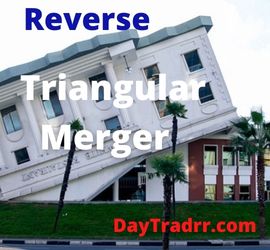What are Closed Positions?
 Closed positions are transactions that have been liquidated by a trader and are no longer active. To close a position, you must trade in the opposite direction in which the position was opened. For example, if you take a long position in a company, you must sell an equivalent quantity of shares in order to liquidate your position. A position that has been closed cannot be reopened. Any profit or loss is recognized at the moment of closing, and the account balance is changed appropriately. Closing a position isn’t necessarily a manual process. For example, stop-loss and take-profit orders can be placed in advance. These orders will reverse your position automatically if the market price falls or increases to a pre-specified amount.
Closed positions are transactions that have been liquidated by a trader and are no longer active. To close a position, you must trade in the opposite direction in which the position was opened. For example, if you take a long position in a company, you must sell an equivalent quantity of shares in order to liquidate your position. A position that has been closed cannot be reopened. Any profit or loss is recognized at the moment of closing, and the account balance is changed appropriately. Closing a position isn’t necessarily a manual process. For example, stop-loss and take-profit orders can be placed in advance. These orders will reverse your position automatically if the market price falls or increases to a pre-specified amount.
Closing a position is completing a securities transaction that is the inverse of an open position. This action nullifies the open position and removes the original exposure. Closing a long stock position entails selling an offsetting amount of shares. While closing a short position entails purchasing an equal amount of offsetting shares. It is also a common practice to take offsetting positions in swaps to remove the risk before maturity. Position squaring is another term for closing a position.
Closed Positions – A Closer Look
When traders and investors conduct market transactions, they are opening and closing positions. An open position is the first position that an investor takes on a transaction. It may be either a long or a short position on the asset. However, it must eventually be closed in order to exit from the transaction and lock in a profit or a loss. A long position will sell to close. Whereas a short position will purchase to close. In other words, closing a position entails the inverse action that initiated the position in the first place. An investor who buys Apple (APPL) stock, for example, keeps those shares in his account. He closes his long position in APPL when he sells the shares.
Profits and losses
The difference in price between when a position in a security was established and when it was terminated results in the gross profit or loss on that securities position. Positions may be ended for a variety of reasons. This includes taking gains or limiting losses, reducing exposure, generating cash, and so on. For example, an investor who wishes to offset his capital gains tax burden may terminate his investment in a losing asset in order to realize or harvest a loss.
Holding period
The time elapsed between the opening and closing of a position reflects the security’s holding period. Depending on the investor’s preferences and the kind of investment, this holding time might vary greatly. Day traders, for example, often close out trading positions on the same day they were launched. However, a long-term investor may close out a long position in a blue-chip company several years after it was initially established.
Maturity and expiry dates
For assets with defined maturity or expiration dates, the investor may not need to close positions. For example, bonds and options trading. In such circumstances, the closing position is established automatically when the bond matures or the option expires.
Closed Positions – When Should you Close a Position?
There is no definite answer to when you should close a trade since it is dependent on a variety of circumstances. Your investment strategy, for example, might play a significant role in making that selection. Knowing when to exit a transaction is an important component of being a successful trader. Inexperienced traders often make the error of terminating transactions too quickly if they begin to lose money. Fluctuation and volatility are typical in financial markets. Therefore, it’s not unusual for a deal to go negative. However, closing out too soon and incurring a loss might be a mistake. Once a position is closed, any chance of recovery is eliminated.
Similarly, when a position is heavily up, it might also be difficult to close it out. The mindset alters, and there is an assumption that if it is now profitable, it will continue to increase. Again, this is not always the case, therefore closing out positions and securing profits is critical to success. Making a trading strategy is the greatest approach to close positions at the optimal level. Before you initiate a transaction, determine when you’ll end it at a profit and when you’ll close it at a loss. Of course, then attempt to stick to your strategy and don’t second guess.
Closed Positions – How and Why
Traders will generally close positions for three main reasons:
- Profit targets have been reached and the trade is exited at a profit
- Stops levels have been reached and the trade is exited at a loss
- Trade needs to be exited to satisfy margin requirements
Profitable Closed Positions
One way to exit a position is by placing an exit order that will trigger automatically when prices reach a pre-determined target, using a limit order. Traders who place an exit order in advance with a stop will not need to be at the computer to manage a loss but may find they exit too soon and are filled only to have price move back in their favor.
Another option is for a trader to decide to watch the market and place an order in real-time as the market is moving. The closing order, either a market or limit, to exit the position is entered when they see price reach a predetermined level. In both scenarios, the trader is selling to close their long position for profit. However, they may have different outcomes based on the exit strategy they implement to close the trade.
Losing Closed Positions
In this scenario, the trader is looking to protect their position from excessive losses. In this case, the trader places an order in advance to close the position at a specific price, typically referred to as setting a stop. Traders who place an exit order in advance with a stop will not need to be at the computer to manage a loss but may find they exit too soon and are filled only to have price move back in their favor.
Another way to exit a trade is to monitor price in real-time and manually place an order to exit when the price reaches a specific level. This method allows a trader to watch the price for an exit signal. The downside is, they might stay in a trade too long and incur more loss than they planned. However, a trader watching the market in real-time might be able to time an exit based on the natural market movement and account for price swings.
Forced Closed Positions – Margin Calls
Another reason for closing a position is that the trader receives a margin call. He must either quickly deposit more cash, or closeout their trade, regardless of the market price. Brokers will normally notify their clients before automatically liquidating the trader’s positions to free up account margin. When traders close a position for a profit their account balance will increase. If the trader closes the position for a loss the funds are withdrawn from the trader’s account and their account balance will go down.
Once trades are closed the margin that was being used as collateral for that trade is no longer needed. As a result, that margin is now available if the trader wants to open a position or place another order. Traders will typically receive daily online statements showing the trades they have placed in their account, any open trades, and the funds that are available in their account.
Closing a Position – Example
Suppose an investor has taken a long position on Apple (APPL) shares and is expecting its price to increase. After 3 months, the investor sees a 150% gain in the share price. To lock in his profits, the investor will close out his investment by selling the APPL shares. He does this after the share price reaches the desired level.
Final Words
While most positions are liquidated at the investor’s decision, positions are occasionally closed unwillingly or by force. For example, a long position in a stock maintained in a margin account can be closed out by a brokerage company. This occurs when the share price falls precipitously and the investor is unable to put in the extra margin necessary. Also, in the case of a short squeeze, a short position may need to be covered through a buy-in.
Closed positions might sometimes be partial or not complete. If the investment is illiquid, the investor may be unable to liquidate all of his holdings at once at the agreed limit price. In addition, an investor may close just a part of his stake on purpose. For example, imagine that shares of Apple (APPL) double in price. A trader who has an open position on 2,000 APPL shares may close his position on half the shares. In order to do this, he will place a sell order for 1,000 shares of APPL locking in the profit. Still, it leaves him with an open position on the remaining 1,000 shares.
Up Next: What Is a Reverse Triangular Merger?
 A reverse triangular merger occurs when a parent company creates a shell company to acquire a target company. Once the target is acquired, it is absorbed into the parent company as a direct subsidiary.
A reverse triangular merger occurs when a parent company creates a shell company to acquire a target company. Once the target is acquired, it is absorbed into the parent company as a direct subsidiary.
A reverse triangle merger is also known as a reverse subsidiary merger. It is a common acquisition arrangement in which one business buys another utilizing the acquiring firm’s subsidiary. This subsidiary of the acquiring business merges with and into the target firm with the target company surviving the merger. The target company continues to exist as a business entity, but is now, a wholly-owned subsidiary of the purchasing business. This structure achieves the same outcome as if the acquiring corporation purchased all of the acquired business’s equity.




